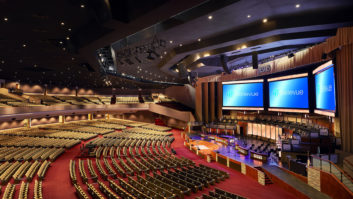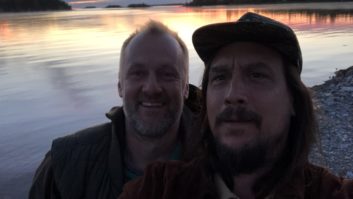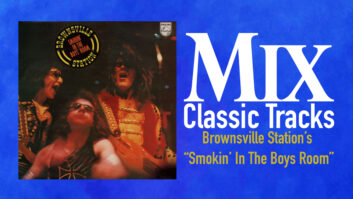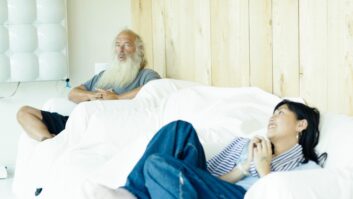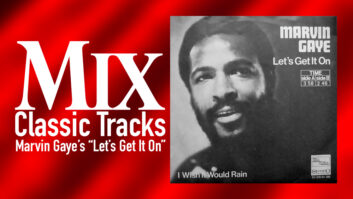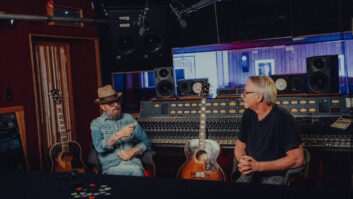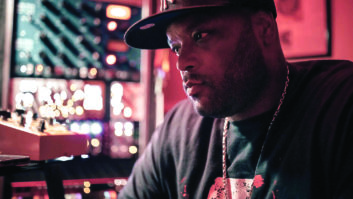
Jersey City, NJ (May 28, 2019)—In 1988, Australian band The Church cracked through the U.S. radio mainstream with its swirling, psychedelic hit, “Under the Milky Way,” a song that immediately permeates your brain with simple yet mesmerizing acoustic guitar chords. Today, the band is on the road marking the 30th anniversary of Starfish, from which the song was culled, playing two sets nightly—one being Starfish in its entirety, the other culling another dozen songs from the band’s other 25 albums.
“Starfish is quite authentically being played,” commented drummer Tim Powles to Pro Sound News at the White Eagle Hall in Jersey City, NJ, the third night of the U.S. leg. Caretaking The Church’s live sound since the early 1990s, Powles has also engineered and/or produced and played on the band’s albums since 1997, and owns a recording studio, Spacejunk, in Sydney, Australia. Kilbey and original band member/guitarist Peter Koppes have been along for the entire 38-year ride and guitarist Ian Haug has been onboard since 2013.
The touring set-up doesn’t require a monitor engineer, in favor of a Mackie rack controlled by an iPad by Powles’ side, allowing him to not miss a drumbeat while also overseeing his fellow musicians’ monitors.
Mix-wise, “Pete likes his vocal really loud. Ian’s wedges sound like the PA. He creates a wall. Everything sounds louder from there; it doesn’t start with a big drum sound and everyone fills in.”
Supplementing the quartet on guitar and keyboards for the Starfish anniversary tour is Jeffrey Cain, best known for his band Remy Zero, which won notices as a support act for Radiohead in the 1990s. “Jeffrey is the new fifth member of the band live. He handles all the bits from the record we can’t play and a lot of the keyboard parts on his guitar that our old keyboard player used to play with his hands [on the keys],” Powles explained. “[Cain’s] a got a wealth of wet sounds, verbs and Mellotron.” Cain also handles the piano, and also plays a lot of acoustic guitar throughout the show.
“The vocals go to the house, but come back to me [at the drumkit], sometimes mastered down,” Powles explained. “The guitar levels change a lot. Atmospheres, backing vocals, some drums, all sorts of things are on the sampler. Some I trigger in real time, some I play as a backdrop, and send them back on the same line. If I have an ambient section on a break, I’ll push my own verbs. I used to run my own reverb unit out front and have it programmed up but that’s long gone. Now it’s returned to stage with different patches for different songs.”
For some Church tours, Powles managed all the boards from the drums manually, running them straight to the wedges. “The house guy did nothing—just stood there—and I even did cues between songs,” he reminisced. “Now everything is placed in the field as I see it. The guitars are all panned, the vocals are there, another reverb patch just for me.”
Powles started playing drums with an ear bud, connected to FOH, as far as back as 1983. In 2003, an FOH engineer told The Church they all should be on in-ears, “and slowly the whole band dropped off except for me. I can play comfortably in-ears. Without them, the sound of the drumkit gets eaten by guitars.”
Plenty of the setlist is a challenge for Powles to mix, not the least being the three interweaving guitars.
“Years before harmonized strings sounds became popular, [Koppes] made his own version of that,” the drummer said. When Powles started making records with the band in 1997, “we really refined down the idea of taking the guitar sound and putting it through multiple delays and reverbs and harmonizing it, then putting it into either two amps or a Leslie cabinet or two,” he explained.
The streamlined rig calls for Koppes getting a clean amp and a channel-changing dirty amp side by side. The guitarist used to have a third amp, but instead uses a Tech 21 SansAmp Bass Driver, a device first adopted by bassist Kilbey totally by accident.
Following the Jersey City soundcheck, Kilbey explained openly that a heroin-induced stupor resulted him in the mid-1990s literally losing his amp on the way to a gig. Realizing the show must go on, “I said at the time, ‘Give me a DI line and I’ll plug into the board. Through my negligence, I made this discovery, and I’ve never looked back,” said Kilbey, who doesn’t “understand why other bassists don’t do it.” Chimed in Powles, “SansAmp has got an incredible bottom end.”
Ironically for the White Eagle Hall gig, there happened to be an extra Ampeg 8×10 cabinet on-hand, and as a goof the crew positioned it on stage behind Kilbey. Purely a prop, the amp was never turned on or connected to the bassist’s axe during the show.
Powles replaced the Patti Smith Group’s Jay Dee Daugherty, who joined The Church unofficially on the drums from 1990 until 1993, after which the band tried to use a drum machine, to no avail. “They rung me up, they were having trouble,” said Powles.
“We made quite a few records without an engineer. Pete also plays drums, and I’d run around [to man the console],” Powles explained.
When asked if he felt like Ron Wood (being a longtime member of an established band), “No, it’s a bit different.” The Rolling Stone guitarist “doesn’t do as much work.”
The Church • www.thechurchband.net

